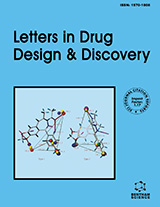Abstract
In recent years, in the post genomic era, more and more data is being generated by biological high throughput technologies, such as proteomics and transcriptomics. This omics data can be very useful, but the real challenge is to analyze all this data, as a whole, after integrating it. Biomedical data integration enables making queries to different, heterogeneous and distributed biomedical data sources. Data integration solutions can be very useful not only in the context of drug design, but also in biomedical information retrieval, clinical diagnosis, system biology, etc. In this review, we analyze the most common approaches to biomedical data integration, such as federated databases, data warehousing, multi-agent systems and semantic technology, as well as the solutions developed using these approaches in the past few years.
Keywords: Data integration, data warehouse, federated database, multi-agent systems, ontologies, semantic web technologies, Biomedical data, computational drug design, bioinformatics
Current Computer-Aided Drug Design
Title:Biomedical Data Integration in Computational Drug Design and Bioinformatics
Volume: 9 Issue: 1
Author(s): Jose A. Seoane, Vanessa Aguiar-Pulido, Cristian R. Munteanu, Daniel Rivero, Juan R. Rabunal, Julian Dorado and Alejandro Pazos
Affiliation:
Keywords: Data integration, data warehouse, federated database, multi-agent systems, ontologies, semantic web technologies, Biomedical data, computational drug design, bioinformatics
Abstract: In recent years, in the post genomic era, more and more data is being generated by biological high throughput technologies, such as proteomics and transcriptomics. This omics data can be very useful, but the real challenge is to analyze all this data, as a whole, after integrating it. Biomedical data integration enables making queries to different, heterogeneous and distributed biomedical data sources. Data integration solutions can be very useful not only in the context of drug design, but also in biomedical information retrieval, clinical diagnosis, system biology, etc. In this review, we analyze the most common approaches to biomedical data integration, such as federated databases, data warehousing, multi-agent systems and semantic technology, as well as the solutions developed using these approaches in the past few years.
Export Options
About this article
Cite this article as:
A. Seoane Jose, Aguiar-Pulido Vanessa, R. Munteanu Cristian, Rivero Daniel, R. Rabunal Juan, Dorado Julian and Pazos Alejandro, Biomedical Data Integration in Computational Drug Design and Bioinformatics, Current Computer-Aided Drug Design 2013; 9 (1) . https://dx.doi.org/10.2174/15734099112089990011
| DOI https://dx.doi.org/10.2174/15734099112089990011 |
Print ISSN 1573-4099 |
| Publisher Name Bentham Science Publisher |
Online ISSN 1875-6697 |
 56
56
- Author Guidelines
- Bentham Author Support Services (BASS)
- Graphical Abstracts
- Fabricating and Stating False Information
- Research Misconduct
- Post Publication Discussions and Corrections
- Publishing Ethics and Rectitude
- Increase Visibility of Your Article
- Archiving Policies
- Peer Review Workflow
- Order Your Article Before Print
- Promote Your Article
- Manuscript Transfer Facility
- Editorial Policies
- Allegations from Whistleblowers
Related Articles
-
Exfoliated Epithelial Cells: A Non-Invasive way to Evaluate the Physiological State of Gastrointestinal Epithelium
Recent Patents on Biomedical Engineering (Discontinued) Heterocyclic Scaffolds: Centrality in Anticancer Drug Development
Current Drug Targets C-11 Radiochemistry in Cancer Imaging Applications
Current Topics in Medicinal Chemistry QSAR and Complex Network Recognition of miRNAs in Stem Cells
Current Bioinformatics MICA Gene and Relevance to Immune Responses in Organ Transplants and Inflammatory, Tumoral and Autoimmune Diseases
Current Immunology Reviews (Discontinued) Drug Targeting Strategies in Cancer Treatment: An Overview
Mini-Reviews in Medicinal Chemistry The Development of Targeted Therapies for Hepatocellular Cancer
Current Pharmaceutical Design New Molecular Targets of Anticancer Therapy – Current Status and Perspectives
Current Medicinal Chemistry Class II Phosphoinositide 3-Kinases as Potential Novel Drug Targets
Current Signal Transduction Therapy A Carboxylesterase 2 Gene Polymorphism as Predictor of Capecitabine on Response and Time to Progression
Current Drug Metabolism Nanoemulsion: A Novel Eon in Cancer Chemotherapy
Mini-Reviews in Medicinal Chemistry Therapeutic Exploitation of Apoptosis and Autophagy for Glioblastoma
Anti-Cancer Agents in Medicinal Chemistry Identification of Functional Peptides from Natural and Synthetic Products on Their Anticancer Activities by Tumor Targeting
Current Medicinal Chemistry Histamine and Histamine Receptor Antagonists in Cancer Biology
Inflammation & Allergy - Drug Targets (Discontinued) Chemotherapy and Target Therapy in the Management of Adult High- Grade Gliomas
Current Cancer Drug Targets Recent Developments of Flavonoids with Various Activities
Current Topics in Medicinal Chemistry Metabolic Profiling in Disease Diagnosis, Toxicology and Personalized Healthcare
Current Pharmaceutical Biotechnology Role of Cellular Biomolecules in Screening, Diagnosis and Treatment of Colorectal Cancer
Current Drug Metabolism Genetic and Epigenetic Heterogeneity in Cancer: The Ultimate Challenge for Drug Therapy
Current Drug Targets The TGF-β Signaling Pathway as a Pharmacological Target in a Hepatocellular Carcinoma
Current Pharmaceutical Design


























